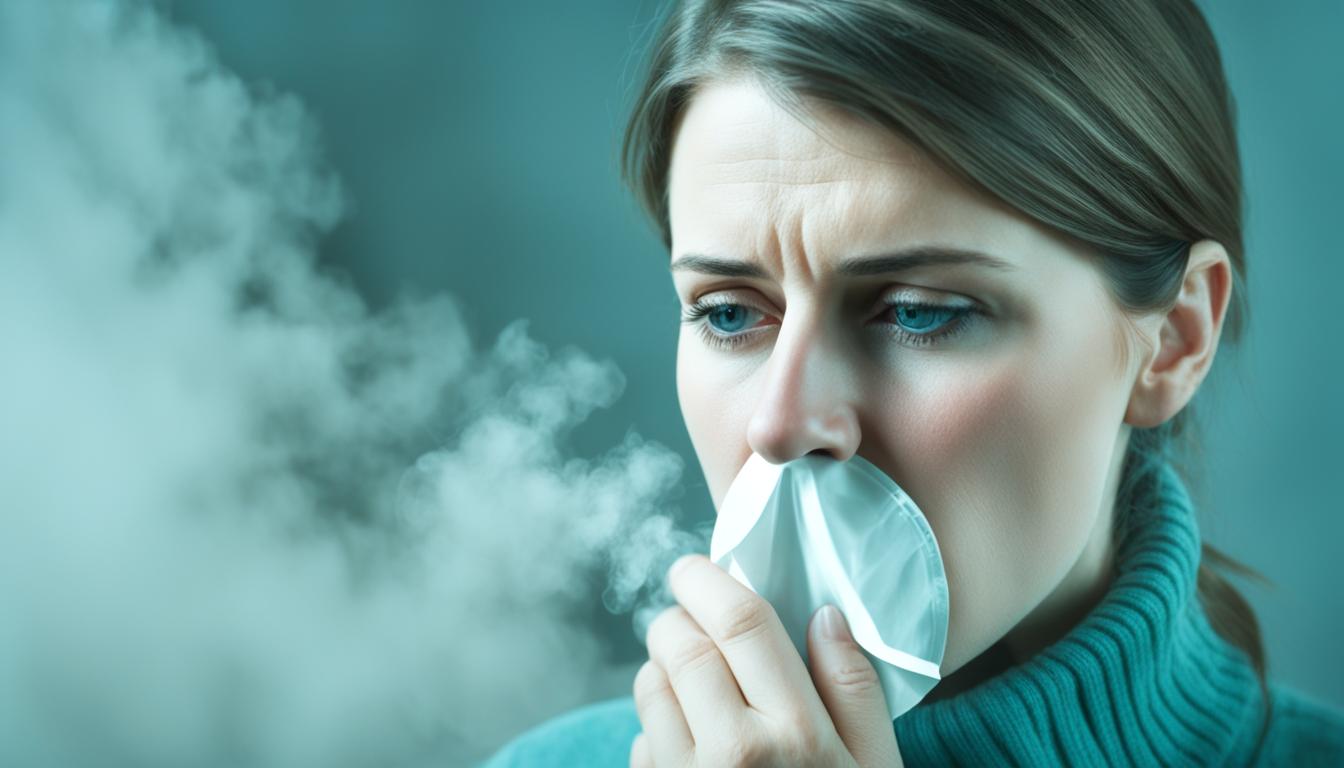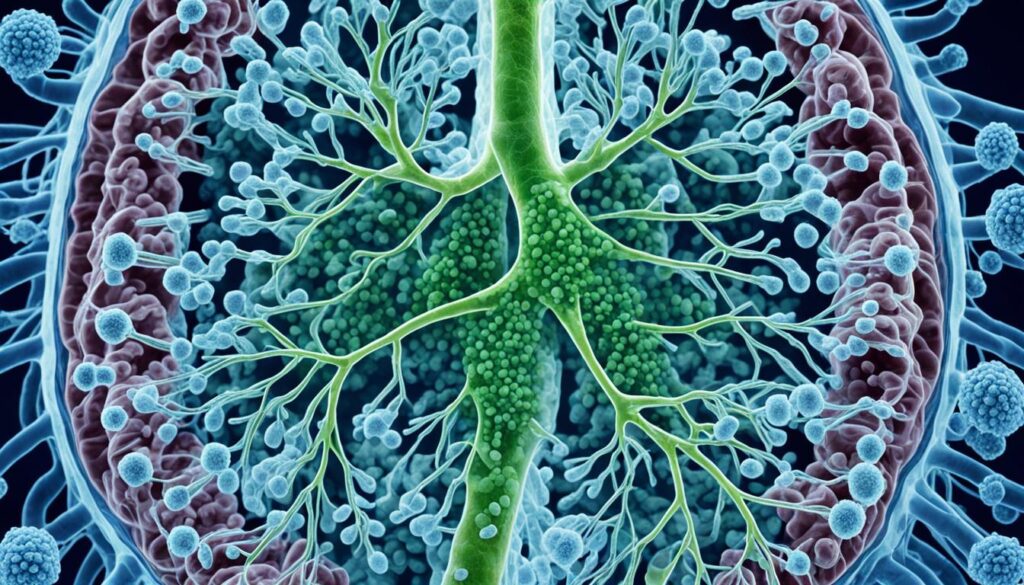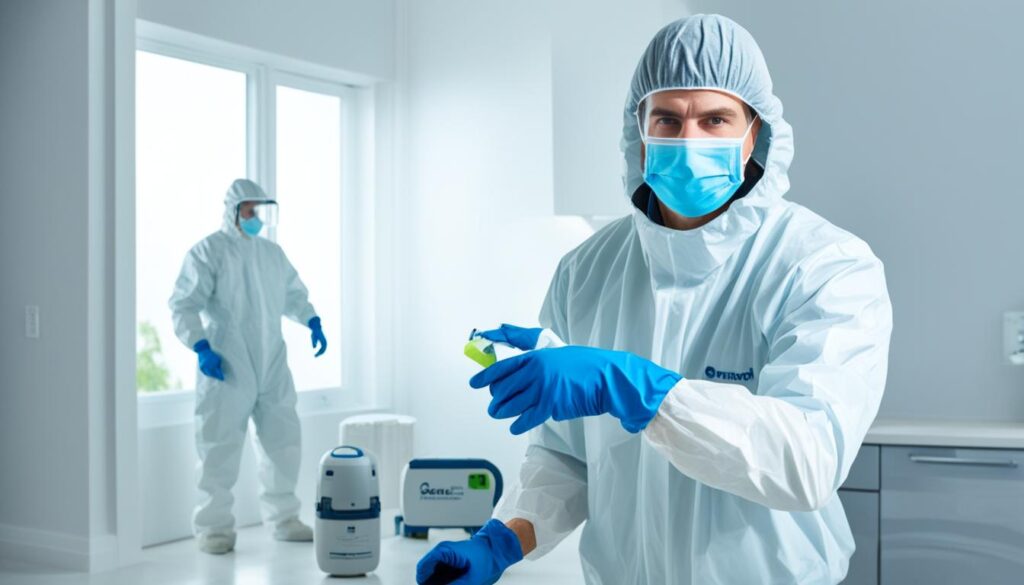
Cladosporium Mold Risks: Is It Dangerous to Health?
When it comes to indoor air quality, one particular concern that individuals should be aware of is Cladosporium mold. This type of mold can be found in various environments, including homes, offices, and schools, and may pose potential health risks to those exposed.
Cladosporium mold has been linked to a range of health effects, which can vary depending on the individual’s sensitivity and the extent of exposure. Common symptoms associated with Cladosporium mold exposure include respiratory issues such as coughing, wheezing, and nasal congestion. In some cases, individuals may also experience allergic reactions, skin irritation, and eye discomfort.
Furthermore, Cladosporium mold has been found to contain toxic properties that can worsen the health effects experienced. While the toxicity level may vary, it is essential to understand the potential risks associated with Cladosporium mold exposure and take necessary precautions.
Key Takeaways:
- Cladosporium mold can have various health effects on individuals exposed to it.
- Symptoms of Cladosporium mold exposure may include respiratory issues, allergic reactions, and skin irritation.
- Cladosporium mold may contain toxic properties, exacerbating the health effects experienced.
- Taking preventive measures can help minimize the risks associated with Cladosporium mold.
- Regular maintenance, proper ventilation, and keeping indoor spaces clean and dry can help prevent Cladosporium mold growth.
Understanding Cladosporium Mold and its Health Risks
In this section, we will provide an overview of Cladosporium mold, its characteristics, and common areas of growth. Cladosporium mold is a genus of fungi commonly found in indoor and outdoor environments, including homes, workplaces, and natural settings. It thrives in damp, humid conditions and can often be found in bathrooms, kitchens, basements, and areas affected by water damage.
Cladosporium mold exposure can pose various health risks to individuals. When inhaled or exposed to the skin, this mold can trigger allergic reactions and respiratory issues. Common symptoms of Cladosporium mold exposure include nasal congestion, sneezing, coughing, itchy or watery eyes, and skin rashes. In individuals with weakened immune systems or pre-existing respiratory conditions, such as asthma, the health risks may be more severe.
To better understand the health risks of Cladosporium mold exposure, let’s take a closer look at the symptoms associated with this type of mold:
Cladosporium Mold Symptoms
- Nasal congestion
- Sneezing
- Coughing
- Itchy or watery eyes
- Skin rashes or irritation
- Shortness of breath
If you experience any of these symptoms and suspect Cladosporium mold as the cause, it is essential to seek medical attention and address the underlying mold issue in your environment.
Next, we will discuss the potential health risks in more detail and explore the importance of taking preventive measures to mitigate Cladosporium mold exposure.

Potential Health Risks of Cladosporium Mold Exposure
Cladosporium mold exposure can have adverse effects on the respiratory system, particularly in individuals with allergies or respiratory conditions. Prolonged or significant exposure may lead to more severe health issues and complications. These can include:
- Asthma exacerbation
- Allergic bronchopulmonary aspergillosis (ABPA)
- Sinusitis
- Hypersensitivity pneumonitis
- Fungal infections
It is important to note that the severity of health risks may vary depending on individual susceptibility, duration and intensity of exposure, and overall health status. If you suspect Cladosporium mold in your environment and experience persistent health issues, it is crucial to consult a healthcare professional for proper diagnosis and treatment.
By understanding the potential health risks associated with Cladosporium mold exposure and recognizing the symptoms, individuals can take the necessary steps to protect their health and create a safer living or working environment.
In the next section, we will explore preventive measures and safety precautions to minimize the risk of Cladosporium mold and promote a healthier living space.
Preventing Cladosporium Mold and Safety Precautions
Taking proactive measures to prevent Cladosporium mold growth in indoor environments is crucial for maintaining a healthier living or working space. By implementing the following practical tips and safety precautions, you can minimize the risk of Cladosporium mold and ensure a mold-free environment:
1. Keep Indoor Spaces Clean and Dry
To prevent Cladosporium mold growth, it is essential to maintain cleanliness and proper moisture levels in your indoor spaces. Regularly clean and vacuum your home or office to remove dust, dirt, and potential mold spores. Pay special attention to areas prone to moisture, such as bathrooms, kitchens, and basements. Keep these areas dry and well-ventilated to discourage mold growth.
2. Control Humidity Levels
High humidity provides favorable conditions for Cladosporium mold to thrive. Use dehumidifiers in damp areas to reduce humidity levels below 50%. Additionally, ensure proper ventilation in bathrooms and kitchens by using exhaust fans or opening windows when cooking or showering.
3. Address Water Leaks and Moisture Issues
Inspect your property regularly for any signs of water leaks or moisture problems. Fix leaky pipes, faucets, or roofs immediately to prevent moisture accumulation and potential mold growth. If you detect any condensation on windows or walls, address the underlying issue promptly to avoid mold formation.
4. Properly Maintain HVAC Systems
Regularly inspect and clean your heating, ventilation, and air conditioning (HVAC) systems to prevent the circulation of mold spores. Replace filters as recommended by the manufacturer and clean drip pans regularly. Proper maintenance of HVAC systems can help minimize the risk of Cladosporium mold entering your indoor spaces.
5. Use Mold-Resistant Materials
When renovating or constructing indoor spaces, opt for mold-resistant materials such as mold-resistant drywall, paints, and insulation. These materials are designed to inhibit mold growth and can significantly reduce the likelihood of Cladosporium mold formation.
6. Be Cautious with Indoor Plants
While indoor plants can enhance the aesthetic appeal of your living or working space, they can also contribute to moisture levels and potential mold growth. Avoid overwatering your plants and ensure proper drainage to prevent excess moisture accumulation in the soil.
7. Practice Good Personal Hygiene
To minimize the risk of Cladosporium mold exposure, practice good personal hygiene. After spending time in potentially mold-infested areas or handling moldy materials, wash your hands thoroughly with soap and water. Additionally, consider wearing personal protective equipment, such as gloves and masks, when cleaning moldy surfaces.
By following these preventive measures and safety precautions, you can significantly reduce the risk of Cladosporium mold in your indoor environments, creating a healthier living or working space for yourself and others.

| Preventive Measures | Safety Precautions |
|---|---|
| Keep indoor spaces clean and dry. | Practice good personal hygiene. |
| Control humidity levels. | Use personal protective equipment when cleaning moldy surfaces. |
| Address water leaks and moisture issues. | – |
| Properly maintain HVAC systems. | – |
| Use mold-resistant materials. | – |
| Be cautious with indoor plants. | – |
Conclusion
Throughout this article, we have explored the risks associated with Cladosporium mold and its potential effects on human health. It is crucial to be aware of these risks and take proactive measures to prevent Cladosporium mold growth in our living and working spaces. By understanding the health effects and following safety precautions, we can minimize exposure and create a mold-free environment.
Exposure to Cladosporium mold can lead to various health issues, including respiratory problems, allergies, and asthma exacerbation. It is especially important for individuals with compromised immune systems or respiratory conditions to be vigilant against Cladosporium mold presence in their surroundings.
Preventing Cladosporium mold requires a combination of practical steps and safety precautions. Regularly inspecting and addressing areas prone to moisture, such as basements, bathrooms, and attics, can help prevent mold growth. Improving ventilation, reducing humidity levels, and promptly repairing water leaks are essential preventive measures.
In addition, maintaining cleanliness, using mold-resistant materials, and employing HEPA filters can further reduce the risk of Cladosporium mold. Implementing these preventive measures will not only safeguard our health but also contribute to a healthier and safer living environment for ourselves and our loved ones.




